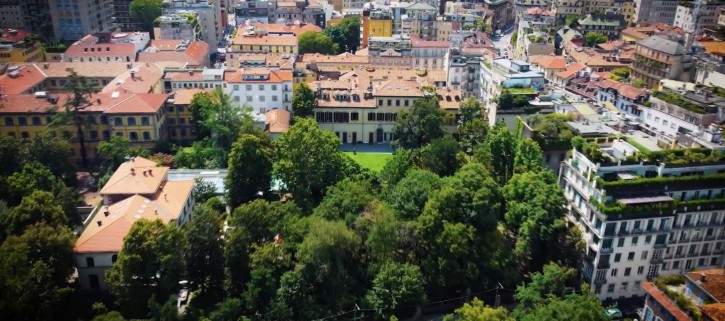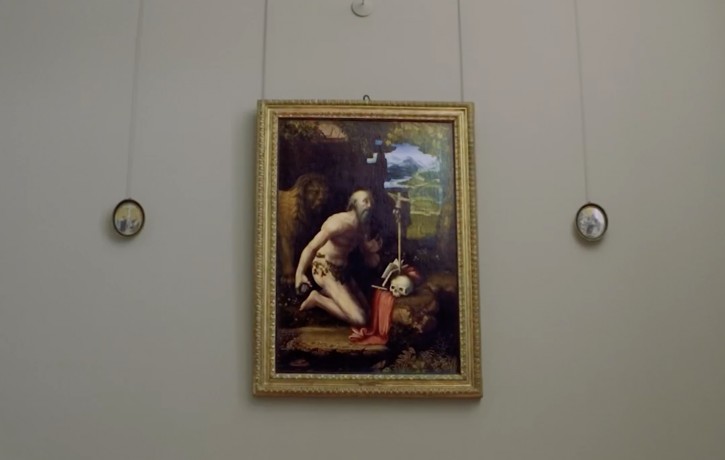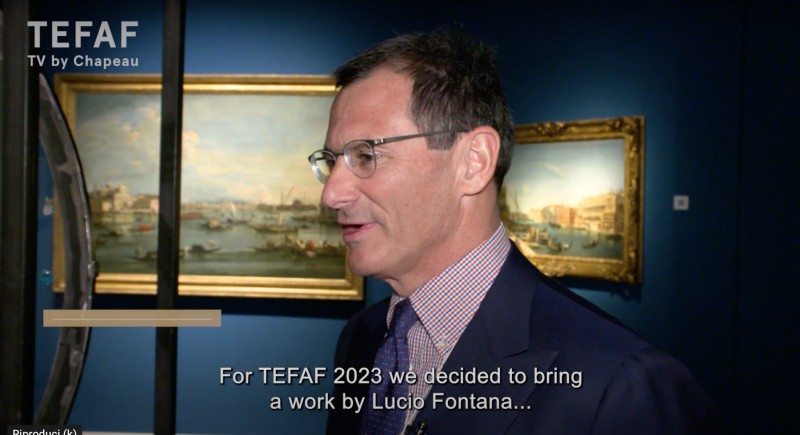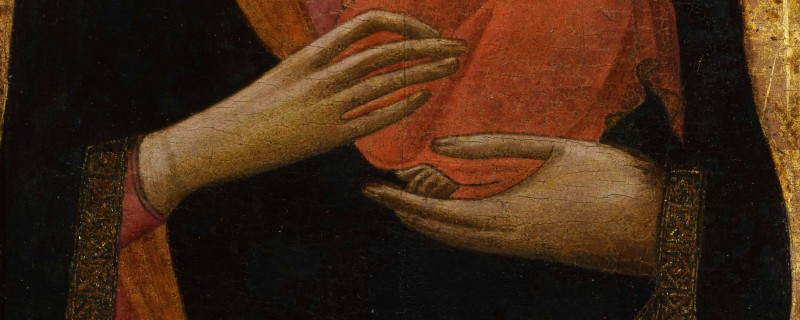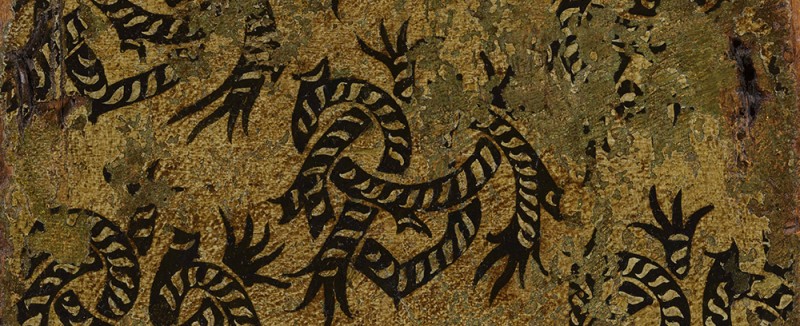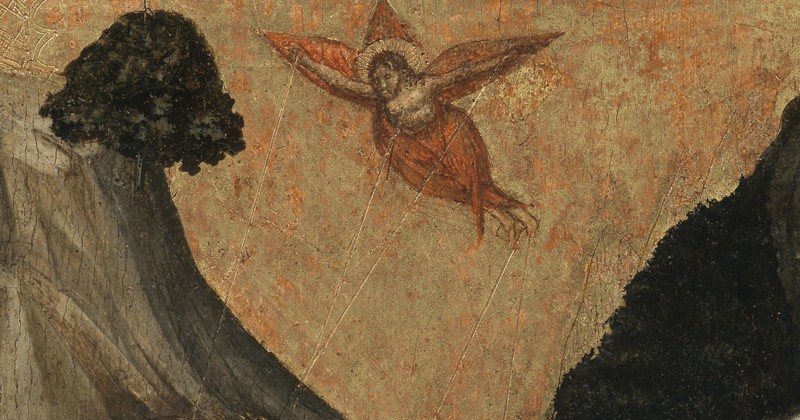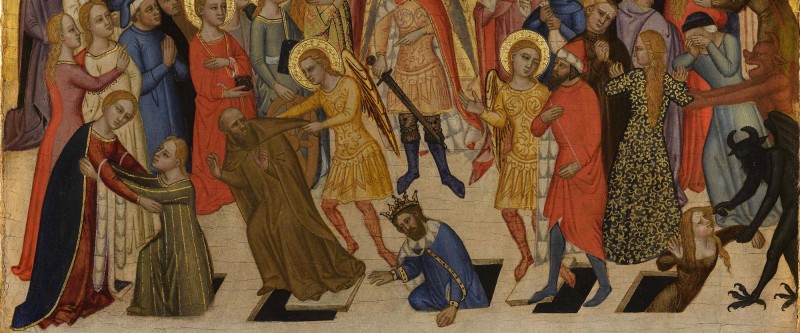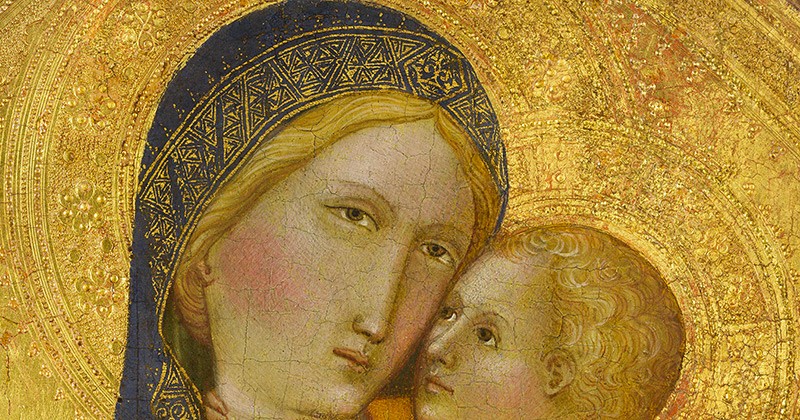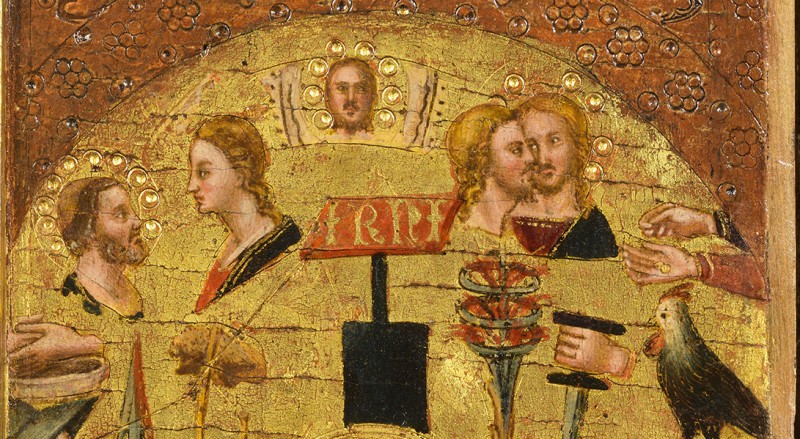Master of 1310
Madonna and Child, tempera on panel, gold ground, c. 1303
The exhibition opens with a masterpiece by one of the most mysterious and fascinating artists of the 14th century, the Master of 1310, a painter from Pistoia named for the date inscribed on the base of a famous Madonna and Child Enthroned now in the Musée du Petit Palais in Avignon. While his identity has not come down to us, he was indisputably the role model for painters in Pistoia and the Tuscan Appennines in the early 14th century. While clearly aware of the stylistic innovations introduced by Giotto in Florence, the Master of 1310 is noteworthy for embracing style of French art and, in particular, of illumination. The expressive treatment of emotion that is such a feature of his work shines through with exemplary clarity in this superb painting, in which the resolute temperament of the Virgin is softened by the sweetness of her blue eyes which unavoidably monopolise our attention.
Read more
Jacopo del Casentino
The Last Supper; Saint Frances Receives the Stigmata, c. 1320
This painting is a fragment of the door on a portable tabernacle intended for private devotion, as we can
see from the combination of different subjects probably specifically commissioned from the artist by the
patron. The iconography of the panel with St. Francis Receiving the Stigmata is traditional, as codified by
Giotto in a panel now in the Louvre, while the iconography of The Last Supper is more unusual thanks to
the detail of St. John desperately clinging to Jesus, who points to Judas as the one who has betayed him.
The diptych is by a pupil of Giotto known as Jacopo del Casentino. Born in Pratovecchio, Jacopo was
active in Florence from c. 1320 to the middle of the century, his work reflecting a style focusing primarily
on narrative detail, as we can see in the panels on display here.
Read more
Niccolo' di Tommaso
Final Judgment, 1360 c.
This panel, unquestionably one of the exhibition's masterpieces, marks an important rediscovery, for although the painting had been known to scholars for some time, their knowledge of it rested entirely on old photographs taken almost a century ago, which naturally prevented them from appreciating the rich and luminous palette and brushwork that we see today. The painter is Niccolò di Tommaso, a Florentine artist and authoritative master of Tuscan art in the 20 years following the tragic experience of the Black Death. Niccolò had been a pupil and assistant of Nardo di Cione in his youth, working with him on the decoration of the Strozzi Chapel in Santa Maria Novella, the back wall of which hosts a Last Judgment that is fairly faithfully reflected in this panel. The circles of saints and other religious figures at the feet of Christ and the Virgin are an explicit reference to Dante's vision of Paradise at the close of the Divine Comedy.
Read more
Giovanni Gaddi
Portable Tryptic, c. 1375
Portable triptychs were items of devotion which were both extremely functional and common in 14th century art throughout Europe, almost always depicting a story in sequence with, in the centre, a Sacred Conversation in which the Virgin and Christ Child are accompanied by a variety of saints. The episodes shown in the side panels in this instance are the birth and death of Christ, chosen because they ideally represent the beginning and end of every man's life. In the centre, Christ and his mother are accompanied by St. John the Baptist, St. Catherine of Alexandria, St. Paul and another sainted martyr with a palm. The artist is Florentine master Giovanni Gaddi, the eldest son of Giotto's longest-living pupil Taddeo Gaddi. Born c. 1330 and dead by 1380, Giovanni is one of the most authentic heirs to the Tuscan tradition, to which he imparted new vigour through familiarity with the sophisticated palette of Giovanni da Milano.
Read more
Agnolo Gaddi
Madonna and Child, circa 1373, tempera on panel, gold ground
This panel is one of the earliest works of Agnolo Gaddi, undeniably the most important Florentine artist of the late 14th century. The son of Taddeo Gaddi, the painter who had been Giotto's "first pupil" for fully 24 years, and the younger brother of Giovanni Gaddi who also has a panel on display in this exhibition, Agnolo trained in Florence in the 1360s with the Orcagna brothers and with Giovanni da Milano, who ran what were then the city's most industrious workshops. He embarked on his own career at the start of the following decade, acquiring a reputation for his very fine handling of colour and for his skill in conveying intimate affection in his figures' gestures, as indeed we can see in this panel. His role as heir to the Florentine tradition resulted in the 1380s and '90s in his receiving the most important commissions for frescoes, starting with the decoration of the Chancel Chapel in the church of Santa Croce. Art historian Angelo Tartuferi has suggested that the the panel on display here may originally have graced the church of Santa Maria Novella.
Read more
Cenni di Francesco
Portable Tryptic, c. 1365
The tabernacle, painted on both sides, displays a very varied iconography in its several panels. The upper side panels show the Annunciation with the Virgin and the Archangel Gabriel, while in the centre we see the Holy Trinity with Two Evangelists. The depiction of the Holy Trinity with three images of Christ side by side, as though revisiting in a Christian sense the Bible story of God's appearance to Abraham in the shape of three men, is most intriguing. In the main panel the Virgin and Child are enthroned with saints and prophets, while on the left and right respectively, top to bottom, we have The Marriage of Tobias and Sarah, St. Anthony the Abbot, St. Christopher and St. Onuphrius, St. Francis, St. Augustine and St. Peter Martyr and the Gospel scene known as Noli Me Tangere. On the back of the two panels we have Christ the Man of Sorrows and the Crucifixion. The tabernacle is by Florentine master Cenni di Francesco di Ser Cenni who kept the flame of Giotto's art alive at the turn of the 14th century and on into the early decades of the 15th. He is best known for his frescoes in the Oratory of the Cross in the church of San Francesco in Volterra.
Read more

